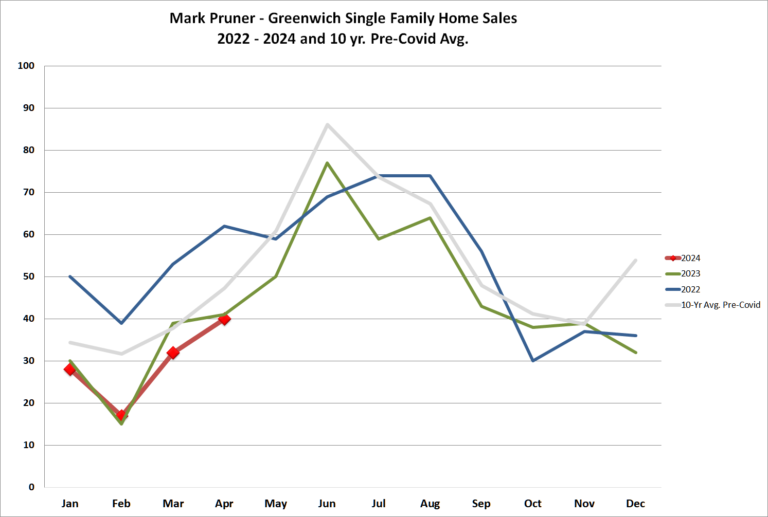The State of Connecticut has activated its heat-related protocol and Greenwich First Selectman Fred Camillo will open several cooling stations around Town starting at noon on Sept. 5 for residents seeking relief from the heat.
The cooling centers will be open through 8 p.m. on Thursday, Sept. 7, which is when the State’s heat-related protocol is also set to expire.
According to the National Weather Service, temperatures are forecast to be in the 90’s on Tuesday, Wednesday and Thursday with the heat index values making it feel as if it is even hotter.
The Town’s libraries and Bendheim Western Greenwich Civic Center will be open their regular hours, as will Town Hall. The Greenwich Public Safety Complex’s Margenot Atrium will be open 24 hours for public access if needed.
These facilities will be available to any resident who needs a respite from the heat or needs to charge small electronics, like phones or laptops.
The Town of Greenwich Cooling centers will be at:
Greenwich Library, 101 W. Putnam Ave.:
· 9 a.m. – 9 p.m.: Monday through Thursday.
Perrot Memorial Library, 90 Sound Beach Ave., Old Greenwich:
· 9 a.m. – 6 p.m.: Monday, Wednesday, Friday.
· 9 a.m. – 8 p.m.: Tuesday & Thursday.
Byram Shubert Library, 21 Mead Ave.:
· 9 a.m. – 5 p.m.: Monday, Wednesday, Friday, Saturday.
· 10 a.m. – 6 p.m.: Tuesday.
· Noon – 8 p.m.: Thursday.
Cos Cob Library, 5 Sinawoy Road, Cos Cob:
· Noon – 8 p.m.: Monday.
· 9 a.m. – 5 p.m.: Tuesday – Saturday.
Bendheim Western Greenwich Civic Center, 449 Pemberwick Road.
· 9 a.m. – 9 p.m.: Monday – Friday.
Greenwich Public Safety Complex, 11 Bruce Place:
· 24 hours
Town Hall, 101 Field Point Road:
· 8 a.m. – 4 p.m.: Weekdays
The Town’s Department of Health reminds residents that heat-related illnesses are a public health threat and that all residents, especially persons who are young, elderly, have medical or mental health conditions, use medications that impede body temperature regulation, those who do not have air conditioning, or those whose work requires outdoor activities and people who are socially isolated should pay special attention to the weather.
Keep children and pets inside, except for brief stays outdoors. Always avoid direct sunlight exposure and give pets plenty of water to drink. Drink plenty of fluids regardless of your activity. Avoid drinks with caffeine, alcohol or those with large amounts of sugar and salt. Those who are on a restricted fluid intake should check with their physician.
Never leave any person or pet in a parked vehicle even if the windows are open and do not leave food items in the car or outdoors as food spoils quickly. It is also important to recognize the symptoms of heat-related illnesses that can become medical emergencies.
HEAT STROKE is also called “sunstroke.” The victim’s temperature control system, which produces sweat to cool the body, stops working. The skin is flushed, hot and dry, and body temperature may be elevated. The victim may also be confused, develop seizures, breathe shallowly and have a weak or rapid pulse. This is the most serious heat-related illness and people exhibiting these symptoms should seek emergency medical attention by calling 911.
HEAT CRAMPS are muscular pains and spasms resulting from heavy exertion. Although heat cramps are the least severe heat-related illness, they are an early signal that the body is having trouble coping with heat and should be treated immediately with rest and fluids. Stretching or direct pressure can also reduce cramps. Unless very severe, heat cramps do not require emergency medical attention.
HEAT EXHAUSTION occurs when body fluids are lost through heavy sweating due to vigorous exercise or working in a hot, humid place. Symptoms include: sweating; pale, clammy skin; fatigue; headache; dizziness; shallow breaths; and a weak or rapid pulse. Victims of heat exhaustion are tired but not confused. The condition should be treated with rest in a cool area, drinking water or electrolyte solutions, elevating the feet 12 inches, and further medical treatment in severe cases. If not treated, the victim’s condition may escalate to heat stroke. If the victim does not respond to basic treatment, seek medical attention.
HEAT TERMS:
• Heat Advisory: When the heat index exceeds 100°F for less than three hours a day for two consecutive days.
• Heat Index: An indicator, in degrees Fahrenheit, of how it feels when humidity is factored into air temperature.
• Heat Wave: Prolonged period of excessive heat often combined with excessive humidity. • Excessive Heat Warning: When the heat index is expected to exceed 115°F or when it exceeds 100°F for three or more hours for two consecutive days.
• Heat Watch: A long-term alert for excessive heat.
• Ozone Advisory: Issued when ozone levels are expected to exceed dangerous levels. People should be especially careful to avoid strenuous activity, especially those with respiratory problems such as asthma.
TIPS TO STAYING COOL:
• Slow down and avoid strenuous activity.
• Avoid too much sunshine. Sunburn slows the skin’s ability to cool itself. The sun will also heat the inner core of your body, resulting in dehydration.
• Wear lightweight, light-colored, loose-fitting clothes that cover as much skin as possible to prevent sunburn.
• Take frequent breaks if you must work outdoors and use a buddy system when working in extreme heat. Exposure to heat can cloud judgment. If you work alone, you may not notice.
• Avoid extreme temperature changes. A cool shower immediately after coming in from hot temperatures can result in hypothermia, particularly for elderly and very young people. Give your body a chance to adjust to extreme temperature changes.
More information from the Greenwich Department of Health about heat related illness is online here.




